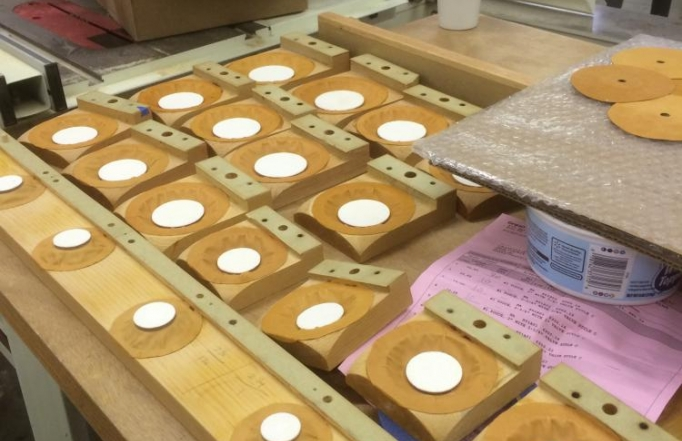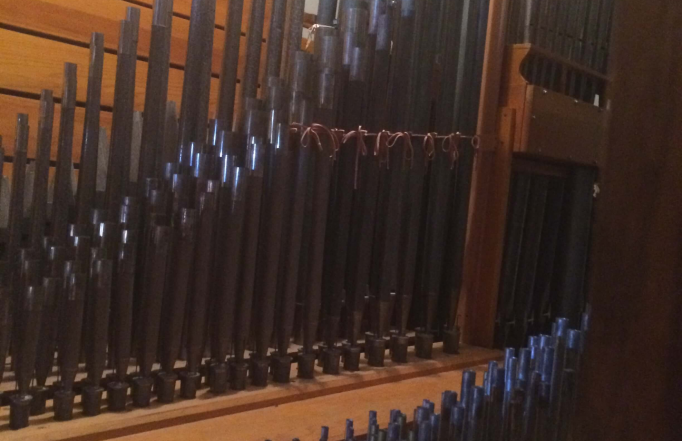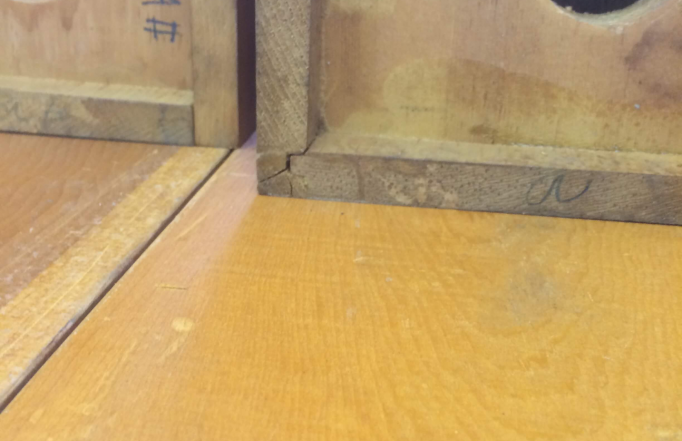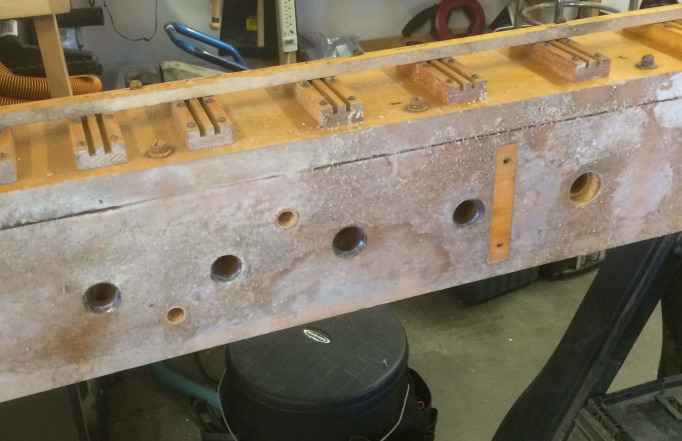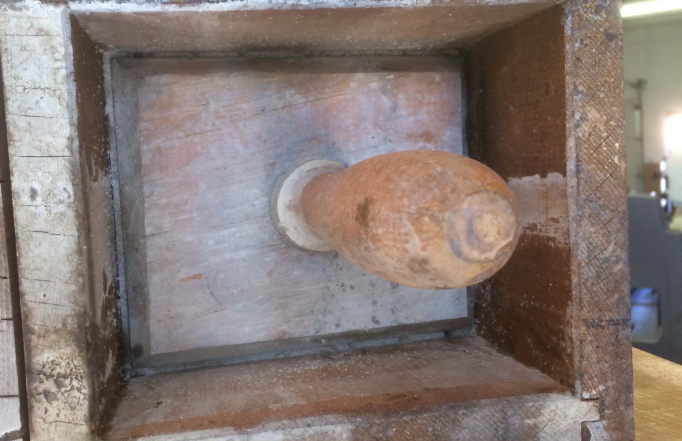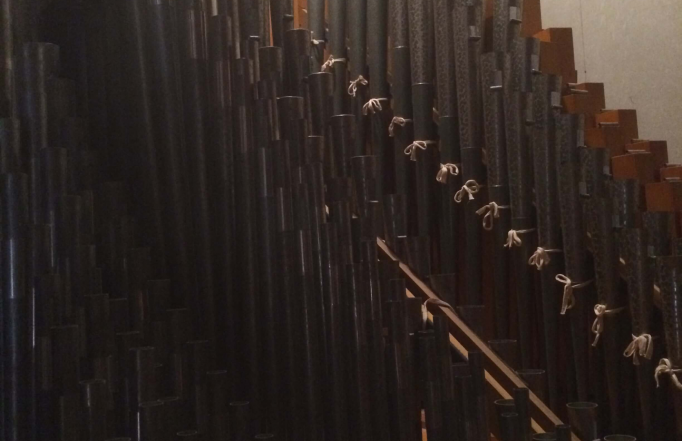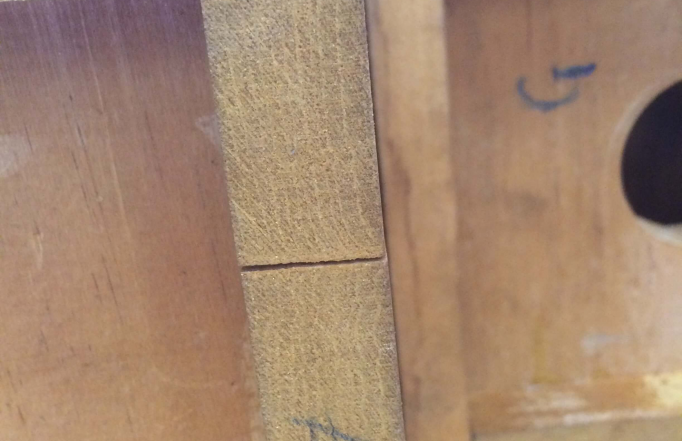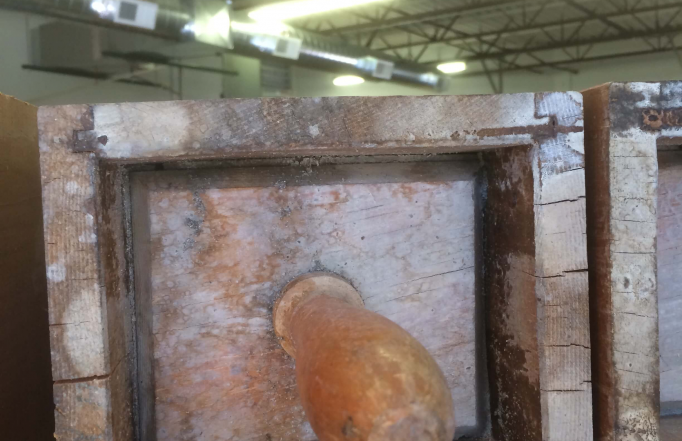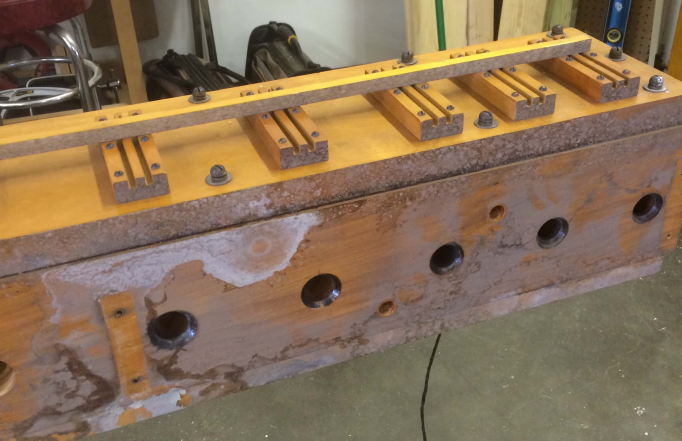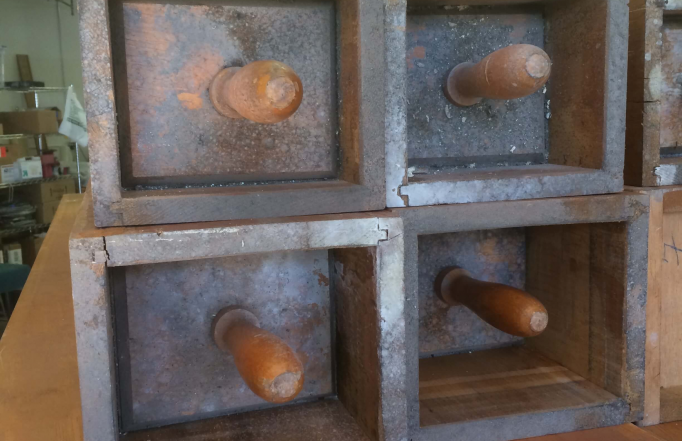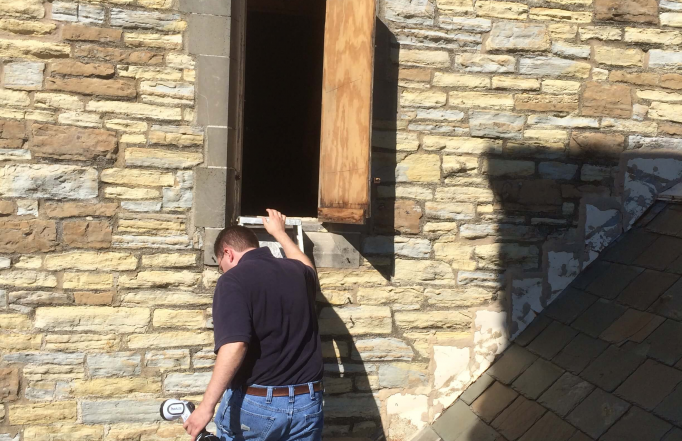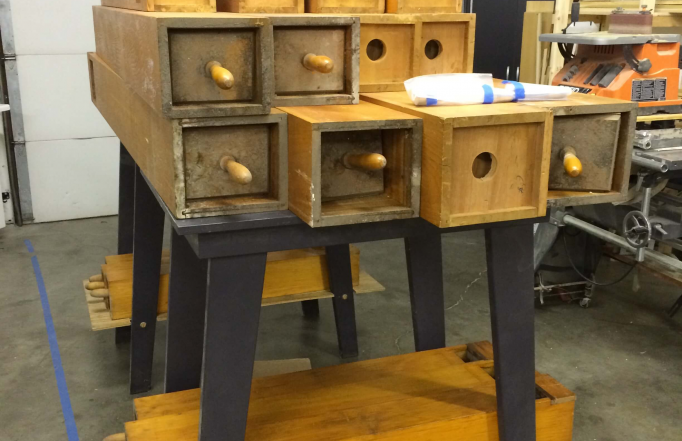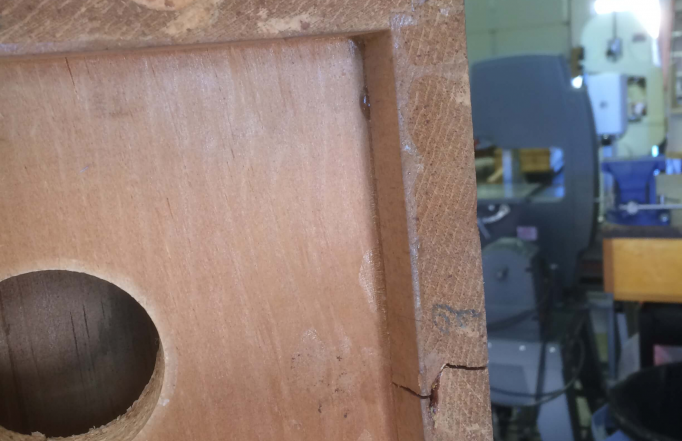Here is a very bad, compound crack that extends into the speaking area of the pipe. This pipe would not speak properly.
More of the wind chest mold. Water got to the inside as well, so we basically had to "start over" and go down to the wood and replace all damaged components, including valves and the leather that carries the valves inside.
Significant mold was another problem we hadn't really anticipated. These pipes were washed with chlorine.
Most of the St. Luke's organ is above the ceiling, in the church tower. To get to it for tuning or servicing one must go out onto the church roof and then climb a ladder to reach this door on the tower. Then follows a walk on a narrow plank over the tone opening to the church below before reaching the relative safety of the organ chamber! Here, David Grandall is about to climb through the door.
Here is a very bad, compound crack that extends into the speaking area of the pipe. This pipe would not speak properly.
More of the wind chest mold. Water got to the inside as well, so we basically had to "start over" and go down to the wood and replace all damaged components, including valves and the leather that carries the valves inside.
Significant mold was another problem we hadn't really anticipated. These pipes were washed with chlorine.
Most of the St. Luke's organ is above the ceiling, in the church tower. To get to it for tuning or servicing one must go out onto the church roof and then climb a ladder to reach this door on the tower. Then follows a walk on a narrow plank over the tone opening to the church below before reaching the relative safety of the organ chamber! Here, David Grandall is about to climb through the door.
St Luke Water Damage
Following a particularly snowy Minnesota winter, the Spring thaw revealed an unknown leak in the roof at St. Luke's Episcopal Church in Minneapolis. The water found its way into a part of the organ in the chancel where the 16' Bourdon (wood pipes) gradually stopped working. Our task was to restore it.


